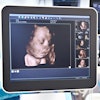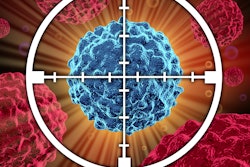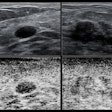Overall cancer incidence in the U.S. was significantly lower than expected during the first 10 months of the COVID-19 pandemic, according to research published February 22 in JAMA Oncology.
A team led by Krystle Lang Kuhs, PhD, from the University of Kentucky in Lexington found that cancer incidence from March to December 2020 included 134,395 potentially undiagnosed cancer cases, lower than expected.
“These findings identify a substantial deficit of diagnosed cancer cases in the U.S. during the COVID-19 pandemic in 2020, which underscores the need to reengage individuals in recommended cancer screenings and routine healthcare visits,” the Kuhs team wrote.
The pandemic led to the temporary closure of nonemergency health services during the first few months of 2020 when resources were allocated to combating the coronavirus. This included postponement and cancellation of health screening appointments for breast, lung, and colorectal cancers to name a few.
Radiology leaders have expressed concern since then that these missed screenings could lead to more cancer cases down the line since they were undetected.
Kuhs and colleagues noted that data for analyzing the relationship between pandemic response and cancer diagnoses have not been available until recently. The researchers used 2020 U.S. cancer incidence data to study disruptions and delays in cancer diagnoses during the first year of the pandemic.
They analyzed data from 1,297,874 cancer cases reported between March and December 2020. This included an age-adjusted incidence rate of 326.5 cases per 100,000 population.
The team reported that the rate of all-sites cancer incidence in the U.S. was 28.6% lower than expected during the height of the pandemic response, which was from March to May 2020. The rate from June to December 2020 meanwhile was 6.3% lower than expected and was overall 13% lower during the first 10 months of the pandemic.
“These differences indicate that there were potentially 134,395 undiagnosed cancers during that time frame,” the researchers wrote.
By individual cancer, prostate cancer made up the largest number of potentially missed cancer cases at 22,950. Breast and lung cancers followed at 16,870 and 16,333 missed cases, respectively.
Screenable cancers meanwhile experienced a total rate reduction of 13.9% compared with the expected rate. The team also found that the rate of female breast cancer showed evidence of recovery to previous trends after the first three months of the pandemic. However, these levels remained low for colorectal, cervical, and lung cancers.
Finally, the team reported that from March to May 2020, states with more restrictive COVID-19 responses had significantly greater disruptions. However, by December, these differences “were nonsignificant for all sites except lung, kidney, and pancreatic cancer.”
The study authors highlighted that these findings “offer crucial information” for initiatives addressing cancer prevention and control.
“Furthermore, these findings emphasize the need to consider how future disaster planning could affect cancer detection,” they added.
The full study can be found here.



















